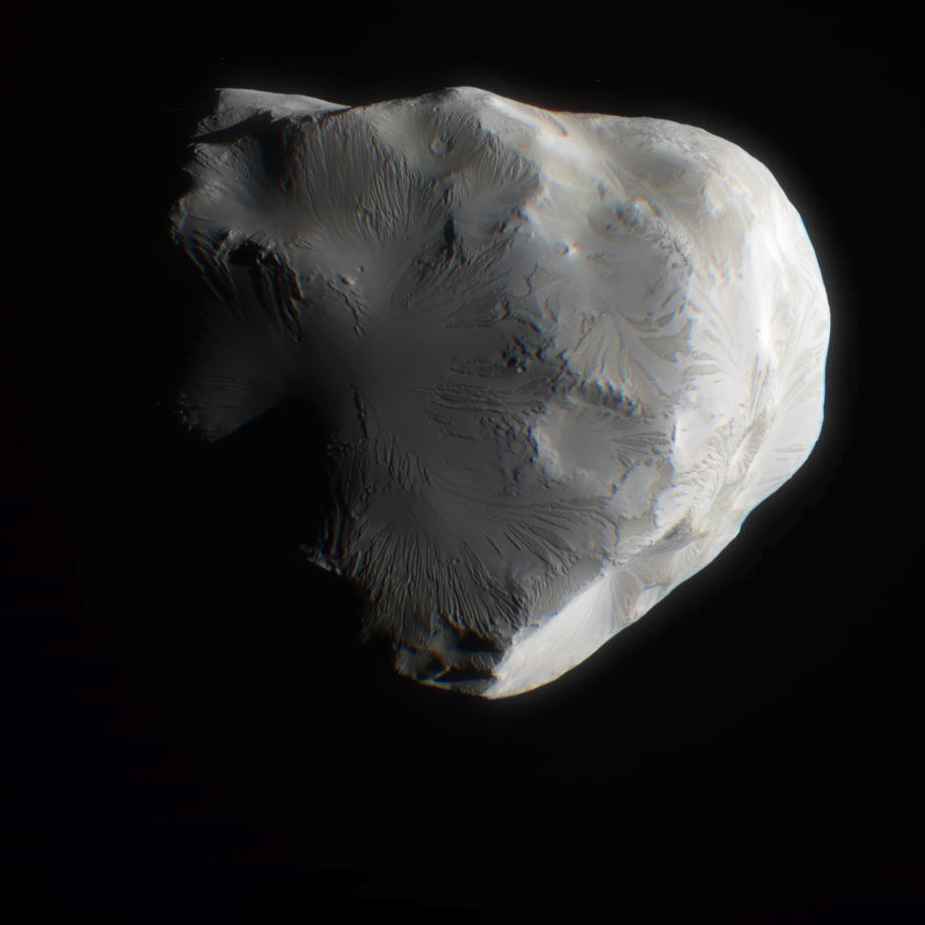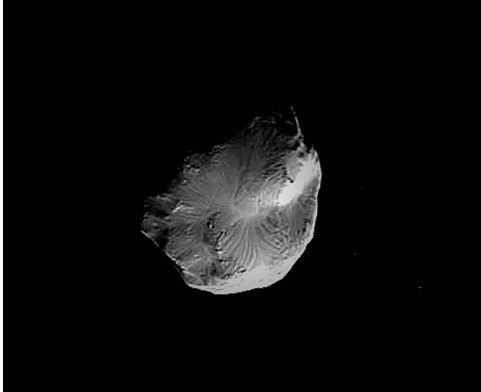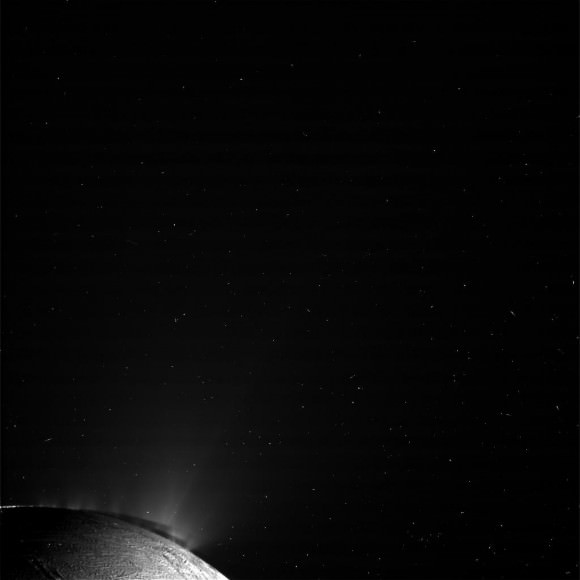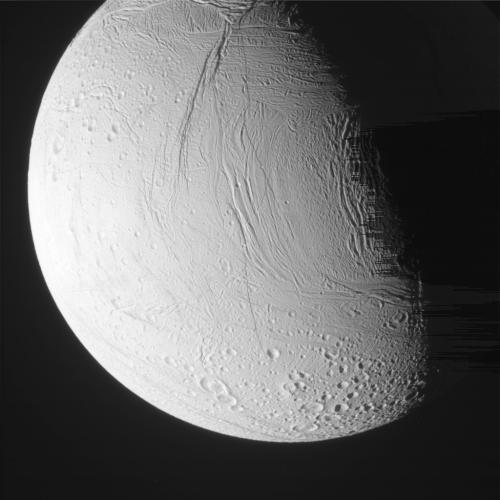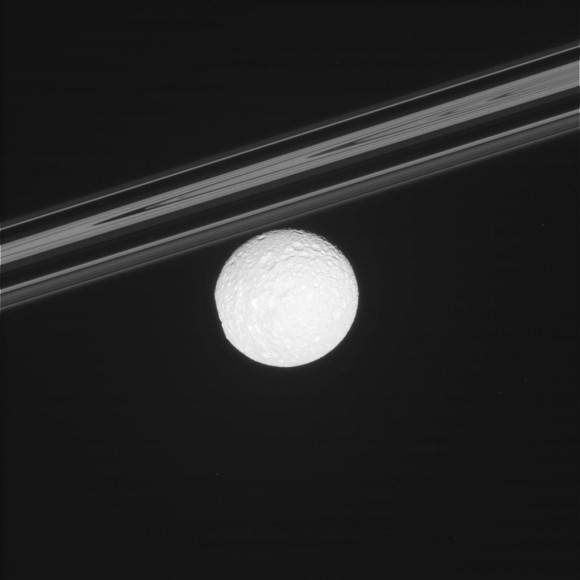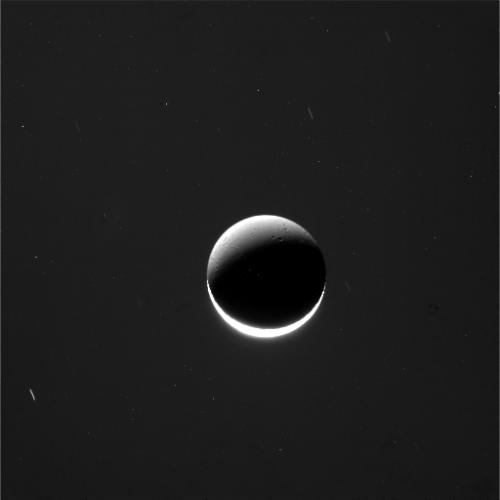[/caption]
On June 18, 2011, the Cassini spacecraft performed a flyby of Saturn’s moon Helene. Passing at a distance of 6,968 km (4,330 miles) it was Cassini’s second-closest flyby of the icy little moon.
The image above is a color composite made from raw images taken with Cassini’s red, green and blue visible light filters. There’s a bit of a blur because the moon shifted position in the frames slightly between images, but I think it captures some of the subtle color variations of lighting and surface composition very nicely!
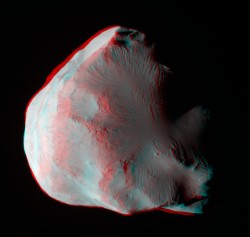
At right is a 3D anaglyph view of Helene made by Patrick Rutherford from Cassini’s original raw images … if you have a pair of red/blue glasses, check it out!
Cassini passed from Helene’s night side to its sunlit side. This flyby will enable scientists to create a map of Helene so they can better understand the moon’s history and gully-like features seen on previous flybys.
(When Cassini acquired the images, it was oriented such that Helene’s north pole was facing downwards. I rotated the image above to reflect north as up.)
Helene orbits Saturn at the considerable distance of 234,505 miles (377,400 km). Irregularly-shaped, it measures 22 x 19 x 18.6 miles (36 x 32 x 30 km).
Helene is a “Trojan” moon of the much larger Dione – so called because it orbits Saturn within the path of Dione, 60º ahead of it. (Its little sister Trojan, 3-mile-wide Polydeuces, trails Dione at the rear 60º mark.) The Homeric term comes from the behavioral resemblance to the Trojan asteroids which orbit the Sun within Jupiter’s path…again, 60º in front and behind. These orbital positions are known as Lagrangian points (L4 and L5, respectively.)
Read more on the Cassini mission site here.
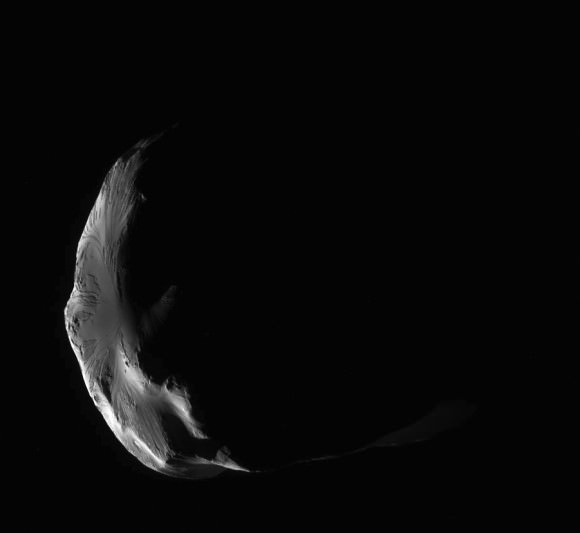
Images: NASA / JPL / Space Science Institute.

